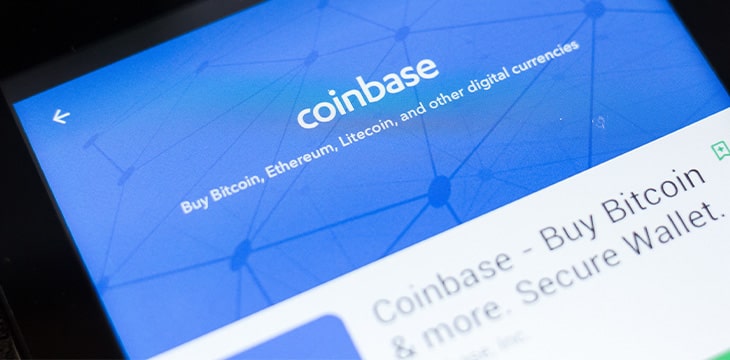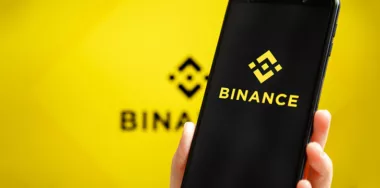| Getting your Trinity Audio player ready... |
Coinbase (NASDAQ: COIN) appears to have named Trent Reznor as its new chairman, based on the cryptocurrency exchange’s unswerving dedication to its Downward Spiral.
After flirting with new record lows this month, Coinbase’s share price staged a modest rebound last week, closing Friday’s trading at $62.71, although that’s still barely one-sixth of its 2021 peak. The company booked a staggering $430 million loss in the first quarter of 2022, which contributed to its recent announcement of layoffs amounting to 18% of its workforce.
Last week, the Moody’s agency took Coinbase’s credit rating down a peg, citing the exchange’s “substantially weaker revenue and cash flow generation due to the steep declines in crypto asset prices that have occurred in recent months and reduced customer trading activity.” Moody’s warned that it expects Coinbase’s capacity to return to profitability to remain “challenged” for the foreseeable future.
Complicating matters further, Coinbase rival Binance.US—the Potemkin village exchange that serves as a rodeo clown to distract U.S. regulators from ongoing violations of U.S. law by the Binance mothership—announced that it would eliminate fees on BTC trading pairs with so-called stablecoins, putting pressure on Coinbase to follow suit.
All of which spoiled Coinbase’s efforts to reassure investors that it was determined to squeeze more revenue from fewer users making fewer trades. This includes the shutdown of its Coinbase Pro product, which catered to ‘crypto’ whales with lower fees and no trading volume limits. While Coinbase has assured whales that its favorable fee structure will live on through the new Advanced Trade service within its main app and site, the bundling will allow Coinbase to further reduce its tech team headcount.
Coinbase also flagged the imminent launch of its Derivatives Exchange (a rebranded FairX) that will offer ‘nano’ futures contracts—from third-party brokers, because Coinbase still doesn’t have a futures license—involving a mere 1/100th of a BTC token. The aim is to entice ‘crypto’ minnows into ‘investing’ what’s left of their significantly devalued holdings in the topsy-turvy ‘crypto’ derivatives market, because apparently there’s still a few scraps of visible wool left on these sheep and Coinbase isn’t about to let that opportunity pass it by.
Dutch treat
Further spoiling Coinbase’s ‘all is well’ narrative is its recent announcement that, as of June 27, customers in the Netherlands will need to provide greater detail before transferring digital assets off the exchange to a private wallet. The required info includes the recipient’s full name and residential address along with the ‘the purpose of the transfer.’ Coinbase helpfully suggests that this latter category can include things like ‘rent’ or ‘dinner’ (but probably not ‘Class A drugs’ or ‘ghost gun’).
Coinbase added that “in certain cases, we may require you to link a Coinbase Wallet to your main Coinbase account to send crypto assets off the Coinbase platform. This allows us to verify that you control the Coinbase Wallet that is receiving the crypto assets, which is a requirement under Dutch regulations.”
Coinbase’s announcement appears at least partly based on complying with the Financial Action Task Force’s ‘travel rule’ aimed at minimizing money laundering, tax evasion and such. There’s also the fact that updates to the Netherlands’ Sanctions Act 1977 put crypto service providers under the supervision of the Dutch National Bank (DNB) and, in February, the DNB’s Financial Stability Board issued an Assessment of Risks to Financial Stability from Crypto-assets that warned the sector was “fast evolving and could soon represent a threat to global financial stability.”
However, the Netherlands isn’t the only EU market to take a dim view of crypto and Coinbase has so far been tight-lipped regarding why they appear so obsessed with knowing how the Dutch pay their rent. Needless to say, Coinbase’s announcement has enraged crypto-anarchists, many of which are threatening to transfer their business to other, less-intrusive exchanges.
(On that note, any minute now we expect Changpeng ‘CZ’ Zhao to issue a statement as to how Binance has always observed Dutch regulations, wants to establish a local branch office and is totally applying for the necessary permits to operate legally in the country. CZ will later demonstrate this commitment by posting a selfie with a Nijmegen library card.)
But perhaps Coinbase is ahead of the curve. Tokyo-based exchange Bitflyer put its millions of customers on similar notice this week, saying that as of June 29 it would require “additional information registration requirements for external withdrawals of crypto assets,” including “the purpose of withdrawal.” In March, Coinbase imposed similar rules on its Japanese customers.
Maybe they just don’t have your money
There is another possible motive behind digital currency exchanges imposing new withdrawal requirements that many users might find onerous. Specifically, the hope that the higher hurdles might deter privacy-focused individuals from taking their money off the exchange at all, perhaps leading them to go on endlessly flipping one token for another or investing in an exchange’s DeFi yield-based offerings.
Coinbase set off alarm bells when it released its Q1 financial report card in May, as the document included a warning that, in the event of a bankruptcy proceeding, customers holding assets on the exchange would be treated as unsecured creditors. Coinbase CEO Brian Armstrong did some frantic Twitter damage control, insisting that “we have no risk of bankruptcy” while admitting that digital currency’s lack of legal precedents meant that “it is possible, however unlikely, that a court would decide to consider customer assets as part of the company in bankruptcy proceedings.”
‘Crypto’ critics like Frances Coppola quickly pounced, noting that Coinbase’s financial report listed customer deposits on the company’s balance sheet, despite the fact that “Coinbase’s own legal terms of use say the funds belong to the customers and are not loaned to it. They should not be on its balance sheet at all.”
Coinbase routinely goes offline for ‘unscheduled maintenance’ during major tumbles in ‘crypto’ token value—never during periods in which customers are buying—which conjures up images of nervous bank executives locking their doors because they know they lack the liquidity to pay every member of the mob trying to get inside to withdraw their life’s savings.
Tokens like BTC and ETH recently slipped below their peaks from the previous bubble—an unprecedented feat in crypto’s relatively short history—and companies whose business models were entirely reliant on ‘number goes up’ trajectories found themselves unable to meet their obligations to customers. Crypto’s interconnected nature meant that one company’s failure to honor its debts triggered a cascading series of defaults that could ultimately bring down this whole house of cards.
With the bloom off the NFT rose and DeFi making kids’ lemonade stands look like paragons of financial accountability, it’s worth noting that those two sectors accounted for nearly half of the holdings of Coinbase Ventures, the exchange’s VC arm. As ‘crypto winter’ starts to look more like an ice age, perhaps Coinbase’s Dutch customers should just swallow their anarchist pride, fill out the forms and get their money off the exchange while they still can.
Watch: BSV Global Blockchain Convention panel, The Future of Digital Asset Exchanges & Investment
https://www.youtube.com/watch?v=RzJsCRb6zt8&t=7800s
New to blockchain? Check out CoinGeek’s Blockchain for Beginners section, the ultimate resource guide to learn more about blockchain technology.








